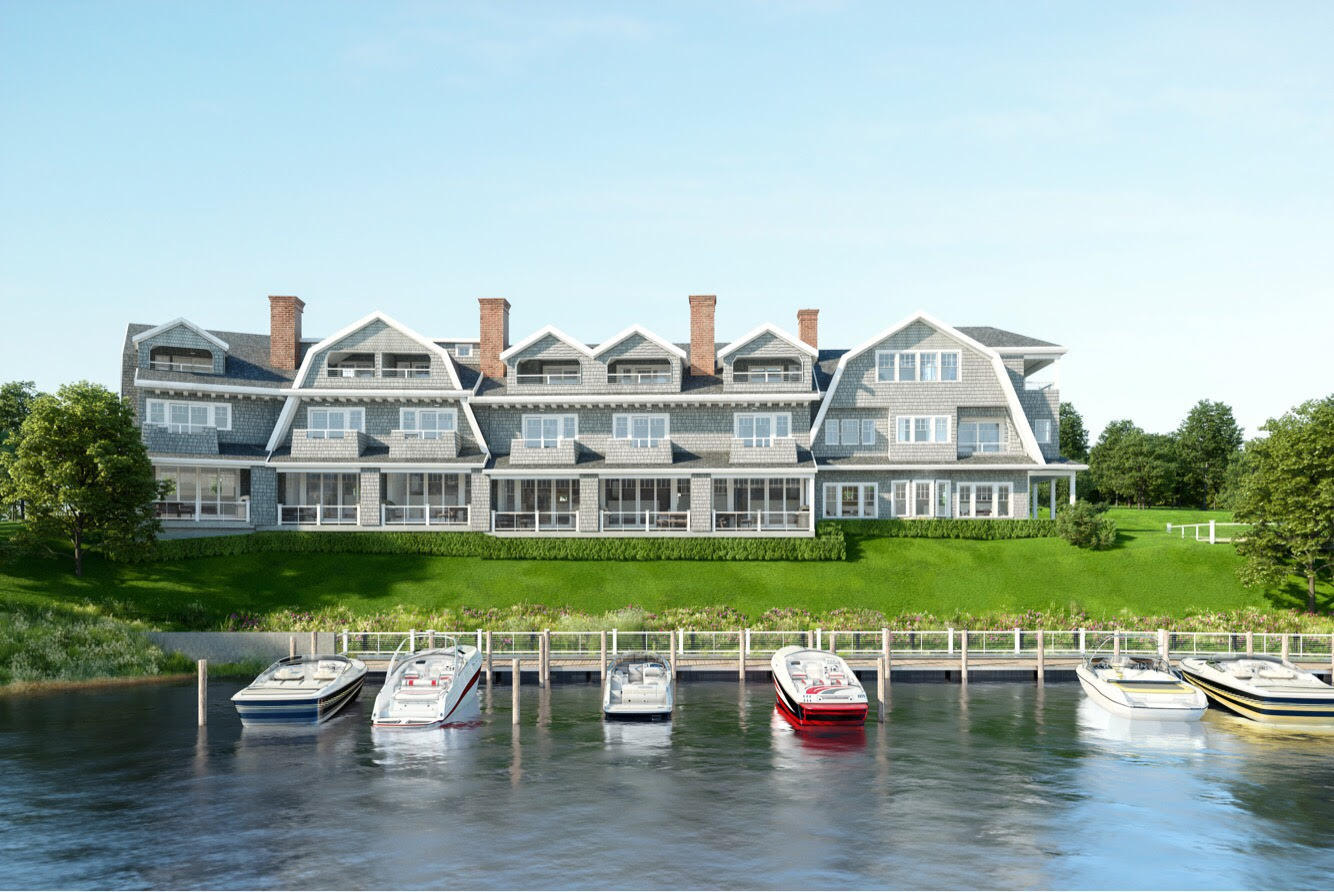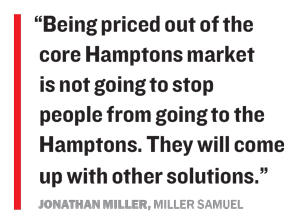Trending
To find a place out east, some head west
Second-home buyers looking for a vacation from high prices and congestion see the lure in the Hamptons outskirts

With a lack of affordable options in the old, moneyed Hamptons and traffic only getting worse, a bevy of small towns on the edges of the Long Island enclave are seeing more interest from buyers. And brokers are taking note.
“I’ve opened up and broadened my horizons a little bit to become more of an expert in some of the outlying areas,” said Brown Harris Stevens broker Cynthia Barrett. “They’re offering so much more to more people.”
Indeed, the boundary lines of the Hamptons are blurring. Barrett, along with other brokers, said she is seeing more clients looking for newer, less expensive digs north of Route 27 and west of the Shinnecock Canal (the ritzier parts of the Hamptons are generally south of Route 27 and east of the canal). These clients want homes that don’t need extensive renovation or maintenance.
“I might be more apt to [show homes in those areas] because I’m finding that clients are looking for value or to be close to the water or for new construction that’s closer to the city,” Barrett said.
They’re finding those things in towns such as Hampton Bays, Remsenburg, Westhampton Beach, Shinnecock Hills, Quogue, East Quogue, North Haven and Springs, where the vibe is decidedly lower key.
In the first quarter of the year, for example, while sales in the Hamptons as a whole were up 20 percent compared to the same quarter last year, Hampton Bays saw a 65 percent jump in the number of homes sold, according to Town & Country Real Estate’s first-quarter report.
The Southampton hamlet also saw a 130 percent increase in the sales of houses under $500,000. In April, in another sign of its growing popularity, Hampton Bays saw a 19th- century home sell for the highest price ever recorded there, $5.7 million.
 And there’s also a lot of action on the North Fork, sometimes called the un-Hamptons. There, the median sale price jumped 17.9 percent and the number of sales in the first quarter was up 5 percent year-over-year, according to a report from Douglas Elliman.
And there’s also a lot of action on the North Fork, sometimes called the un-Hamptons. There, the median sale price jumped 17.9 percent and the number of sales in the first quarter was up 5 percent year-over-year, according to a report from Douglas Elliman.
The North Fork will “never have the ocean,” said Judi Desiderio, CEO of Town & Country. But the vineyards and farm-to-table restaurants make the area unique, she said.
Lower prices, less traffic
Affordability is definitely helping to drive the trend toward “border towns,” especially for millennials.
“As the South Fork has gotten more expensive over the past four or five years, you’re seeing people buy homes in what were considered year-round communities … essentially because of the affordability crunch,” said Jonathan Miller, president of the real estate appraisal firm Miller Samuel and author of the Elliman report.
The market out east resembles real estate trends in the New York City metro region as a whole, Miller said, where the supply of homes is tighter for mid-range homes than for luxury homes.
“Being priced out of the core Hamptons market is not going to stop people from going east,” Miller said. “They will come up with other solutions.”
Certainly, affordability is attracting buyers in Springs, a long-time artists community north of East Hampton that was a haunt of such artists as Jackson Pollock and Willem de Kooning. It still attracts artists, said brokers, and now, other buyers in search of reasonably priced homes. “It’s become a community, and a lot of people are moving there,” said Enzo Morabito, a broker at Douglas Elliman.
In Westhampton, including the towns of Remsenburg, Westhampton Beach, Quiogue, Quogue and East Quogue, Town & Country’s first-quarter report shows 8 percent fewer sales, but there was a 15 percent increase in dollar volume and a 44 percent increase in the number of homes under $500,000 sold in the first quarter. However, there was a 42 percent drop in sales of homes between $500,000 and $999,000, perhaps further proving that it’s affordability that draws buyers to these areas.
Traffic also drives interest in the towns skirting the Hamptons. “People have been talking about [it] for long, long time,” Morabito said. “With millennials and even with older people, it’s not having the hassle of getting some place.”
Morabito said it’s not even as if he has to make an elaborate sales pitch anymore. He used to call west-of-the-canal Quogue “the closer Sagaponack,” he said, because of its oceanfront location and small town feel. But, he said now people “are getting it; I don’t have to market that way anymore.”
Desiderio agreed that avoiding traffic is a priority, especially for “young buyers in their 20s and 30s. For them, to sit in the car and watch paint dry is painful. Without traffic, you can get in and out of Remsenburg or Quogue in an hour and a half,” she said.
Some developers are paying attention to the trend. Rechler Equity, for one, will soon break ground on the Boat Houses at Shinnecock, which will put 37 townhomes on the canal, as well as restore the nearby Canoe Place Inn and add a clubhouse and catering hall — all of it on land that brokers said used to be “at the end of the world.” Not any more.
“It’s 10 minutes from Southampton restaurants, Hampton Bays and ocean beaches,” said Mitchell Rechler, co-managing partner of Rechler Equity Partners.
Growing popularity has its own pitfalls, of course, as greater demand pushes prices higher. “Two years ago, you could buy a home in Hampton Bays for $400,000,” said Morabito. “Today, that same home has probably gone to $600,000.”
Sticking with the tried and true
Of course, interest in the traditional Hamptons is still strong. The number of sales between $5 and $10 million was up 29 percent over the first quarter of last year, according to the Town & Country first-quarter report.
For many people, it’s still about being able to rub shoulders with the who’s who of the Hamptons, said Sotheby’s Harald Grant. But even there, people are scaling back, buying new or already renovated houses with less land.
“They’ll buy an acre because it’s less of a headache and less maintenance, but it’s still in Sagaponack or Bridgehampton or Water Mill,” he said.




